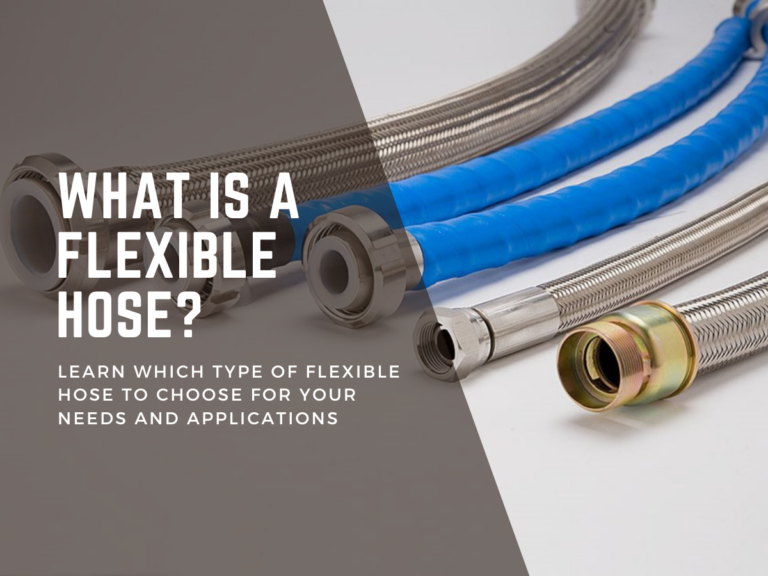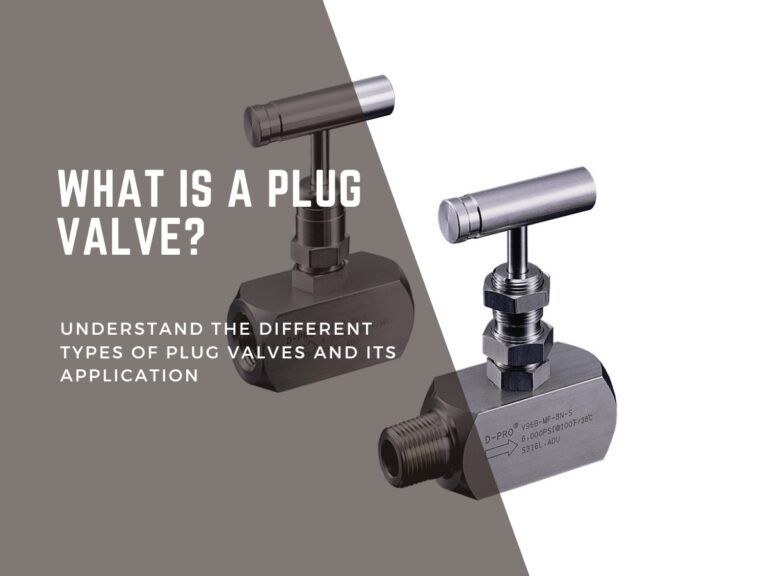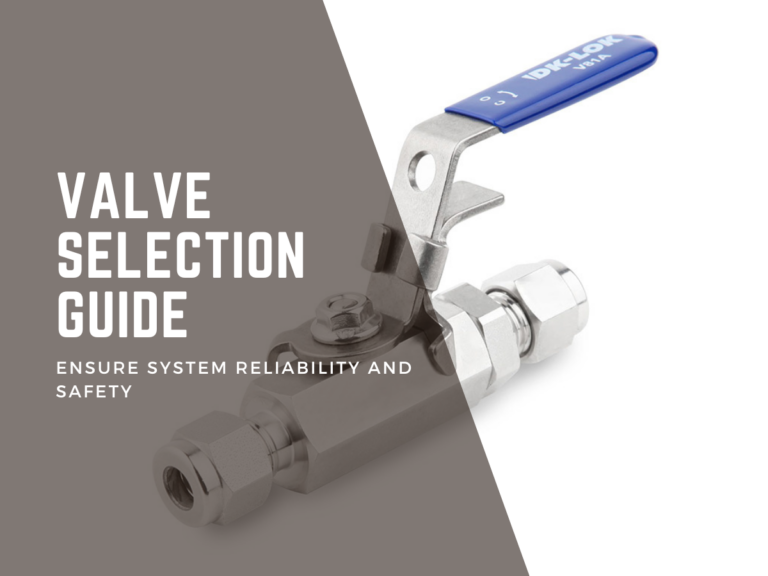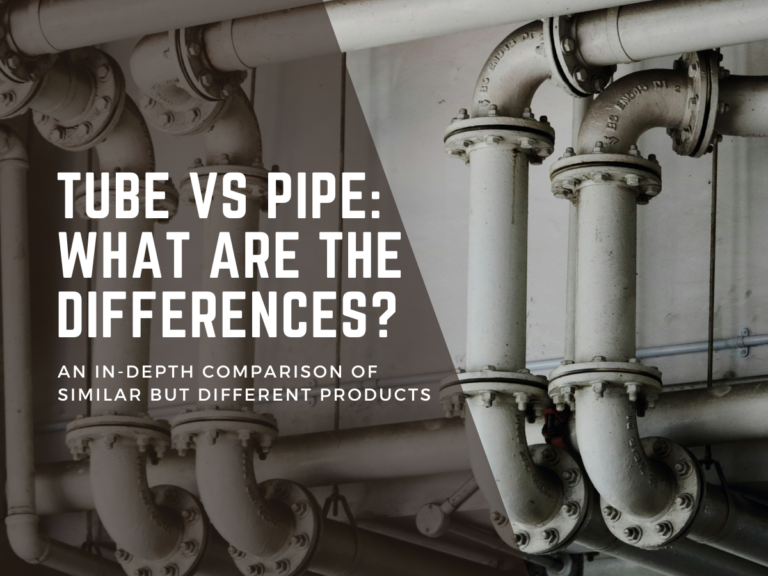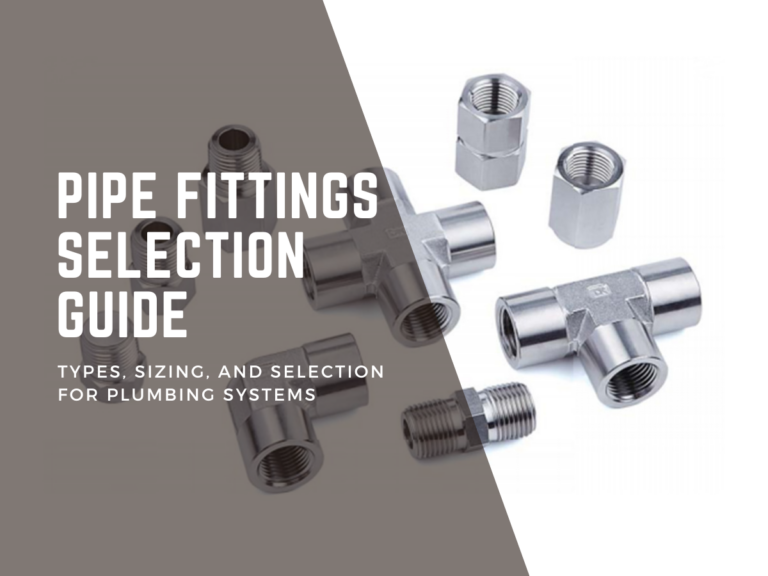Instrument fittings consist of two ferrules that reinforce a shaft or bind materials together. They provide a torque-free seal and prevent leaks at tube connections. Instrument fittings can help you eliminate fluid leaks in your instrumentation. Additionally, you can use them in various settings, including pressure, hydraulic, process, and other tubing applications. Learn more about the types of instrument fittings for different use cases.
Definition of an Instrument Fitting
Instrumentation tube fittings create leak-free connections. These double ferrule systems are available in metric and standard sizes. They include a tube-fitting body, exterior nut, and two malleable ferrules that can be adjusted to your needs.
What Are Double Ferrule Fittings?
A ferrule is a ring or cap that strengthens the end of the tube to prevent splitting and other defects. Instrument fittings can connect fractional tubes and pipes of varying diameters with two ferrules. They include butt weld fittings that facilitate smooth direction changes and transitions to smaller pipe sizes.
Double ferrule compression fittings, consisting of a body, nut, and double ferrule, are widely used in several industries. They create a tight grip on the tube or pipe they’re connected to, making them resistant to leaks and corrosion.
How Are Instrument Fittings Used?
Nearly every processing plant includes pipes containing fluids. It’s expensive to adapt piping components for electrical or mechanical purposes. Additionally, piping components are prone to leakage where they connect. Instrumentation tubing can alleviate this problem and save your company money on materials.
While instrument tubing offers many advantages over systems made solely of piping components, finding the right tube fittings for your needs is essential. Adaptable instrument fittings make cutting tubes to the same length and connecting them or other devices easy.
Instrument fittings have thin walls and connect instruments or tubes. While small diameters, these fittings can be used for many purposes. Simlecco offers instrument fittings that withstand vibrations, high pressure, and extreme temperatures. Before choosing the right type of instrument fittings for your operations, research the pros and cons of using them.
Advantages of Instrument Tube Fittings
These versatile connectors offer many benefits. They are easy to use, resist vibration, and help prevent leaks.
- Easy to use: You don’t have to adjust these fittings by threading or flaring them. You can use wrenches and other standard equipment to install them. They can save you time and money and minimize downtime in your manufacturing plant.
- Withstands high vibrations: Made of flexible but durable materials, instrument tube fittings withstand vibrations and deflection well. Simlecco offers a variety of sizes and configurations to meet your needs. Talk with one of our experienced professionals to understand how these fittings can prevent interruptions in your workflow.
- Fewer leaks: If your current instrument fittings or other connections leak, consider Simlecco products as a replacement. Our products can benefit your industrial operations with fewer leaks and metal-on-metal connections.
Disadvantages of Instrument Fittings
Instrument fittings work better with small-diameter connections than large-diameter tubing. If you use instrument fittings with large tubes, you’ll need special tools to bend and adapt them. This increases the chance of leakage.
Applying Instrument Fittings to Your Production Process
Instrument tube fittings are a critical part of your fluid distribution system. Choosing the right one is essential to obtain a smooth, reliable, and leak-free flow. At Simlecco, you’ll find a wide range of instrument fittings to meet the needs of your industry. Our team takes your entire operation into account before making a product recommendation.
Instrumentation fittings work well in industries requiring double ferrule fittings. Examples include the following:
- Aerospace
- Petrochemical
- Laboratory
- Shipbuilding
- Paper products
- Power plants
- Semiconductor manufacturing
- Many other sectors
Materials Used in Instrument Fittings
The best material for your application depends on the application. However, most instrument tubing fittings are made of durable metals, such as stainless steel. Oil and gas companies and prescription drug manufacturers often use stainless steel fittings to avoid corrosion.
Carbon steel fittings lend strength and longevity to your tubing system. This material suits applications involving electricity. Low-temperature alloys are ideal for industrial processes requiring cold temperatures. Copper alloys are popular for plumbing systems, whereas nickel alloys hold up well against high-temperature environments.
Simlecco’s Selection of Instrument Fittings
Simlecco offers three main types of instrument fittings, as follows:
- General Utility Service Needle Valve: Use this fitting for precise control. This valve has fine threads on the stem, and its compact size works well in high-pressure environments.
- Instrument Manifolds: Choose this part to tie multiple instruments together under constant pressure. Instrument manifolds make it easier to isolate and vent liquids and gases.
- Push-On Hose Fittings: You can install these fittings instantly. They connect pipes and hoses without using clamps. Choose push-on hose fittings for your industrial applications for reliable performance and a secure connection.
Instrumentation Fittings Use Cases
Now that you’re familiar with Simlecco’s instrument fittings let’s explore a few use cases for each.
General Utility Service Needle Valve
General utility service needle valves are perfect for laboratory conditions requiring precise flows. You can also use them to regulate pressure and flow in hydraulic systems. If you operate a chemical processing plant, general utility service needle valves withstand corrosive chemicals well. You can also use these connectors to ensure safety and accuracy when distributing gases.
Instrument Manifolds
Instrument manifolds allow greater control and accuracy across numerous applications. Instrument manifolds connect multiple pressure instruments to one source in power plants and the oil and gas industry. Refineries use instrument manifolds to connect pressure gauges and transmitters to maintain efficient, safe operations.
Push-On Hose Fittings
In the automotive industry, push-on hose fittings securely connect fuel, hoses, and oil. They can also be used in your agricultural business to connect irrigation systems and machinery. In the industrial sector, push-on hose fittings make reliable hose connections, and you can install them without complicated tools.
Contact Simlecco to Order Instrument Fittings to Meet Your Needs
If you aren’t sure which instrument fitting would work best in your operations, talk to a Simlecco expert today. Contact us for a free consultation or assistance with our versatile products.

